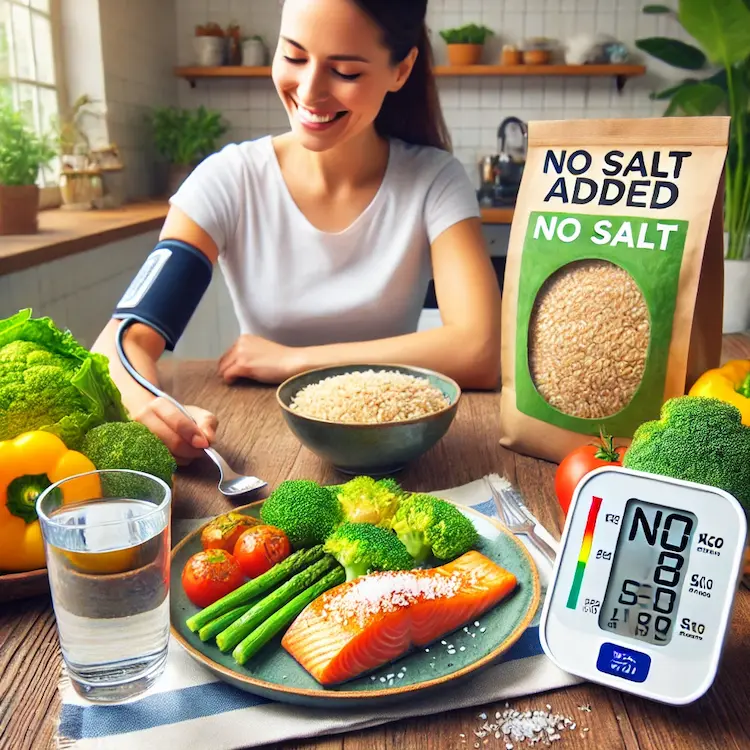Sodium is an essential mineral in the human body, but excessive intake can lead to serious health consequences, particularly in relation to blood pressure. Blood pressure readings, measured using a sphygmomanometer (commonly called a “sphyg”), are crucial indicators of cardiovascular health. Understanding the relationship between sodium intake and blood pressure fluctuations can help individuals make informed dietary choices to maintain optimal heart health.
This article explores how sodium affects blood pressure readings, the science behind it, and ways to manage sodium intake effectively. We will also discuss different measurement techniques, their reliability, and practical advice for maintaining a healthy sodium balance.
Understanding Sodium’s Role in Blood Pressure Regulation
Sodium helps regulate fluid balance, nerve function, and muscle contractions. However, excessive sodium consumption can increase blood pressure by affecting the balance of fluids in the body.
How Sodium Affects Blood Pressure
- Fluid Retention: High sodium intake causes the body to retain water, increasing blood volume. This extra fluid raises pressure on artery walls, leading to higher blood pressure readings.
- Blood Vessel Constriction: Excess sodium can cause blood vessels to stiffen or constrict, making it harder for the heart to pump blood efficiently.
- Impact on the Kidneys: The kidneys regulate sodium levels by filtering excess amounts. When overwhelmed, they struggle to remove sodium efficiently, causing an increase in blood pressure.
Health and Societal Impacts of High Sodium Consumption
High sodium intake contributes to hypertension, a leading risk factor for cardiovascular diseases. The effects extend beyond individual health, impacting healthcare costs, productivity, and overall well-being.
Health Risks
- Hypertension (High Blood Pressure): Chronic high blood pressure increases the risk of heart attacks, strokes, and kidney disease.
- Heart Disease and Stroke: Excess sodium intake is directly linked to an increased risk of heart failure and stroke.
- Osteoporosis: High sodium intake can cause calcium loss, weakening bones over time.
- Kidney Disease: Excess sodium can strain the kidneys, leading to kidney disease and failure.
Societal Costs
- Rising Healthcare Expenses: Treating hypertension-related complications places a financial burden on healthcare systems worldwide.
- Reduced Productivity: High blood pressure-related illnesses contribute to absenteeism and lower work productivity.
- Public Health Campaigns: Governments spend significant resources on awareness programs to reduce sodium intake in populations.
Recommended Sodium Intake: How Much is Too Much?
Health organizations have set guidelines on daily sodium consumption to help maintain normal blood pressure levels.
| Organization |
Recommended Daily Sodium Intake |
| WHO (World Health Organization) |
< 2,000 mg (≈1 teaspoon of salt) |
| American Heart Association (AHA) |
< 1,500 mg for optimal heart health |
| U.S. Dietary Guidelines |
< 2,300 mg (upper limit for adults) |
Unfortunately, many people consume far more than these recommended amounts due to processed and restaurant foods.
Comparing Different Blood Pressure Measurement Methods
To understand how sodium affects blood pressure, accurate monitoring is essential. Below is a comparison of different blood pressure measurement methods.
| Method |
Advantages |
Disadvantages |
| Oscillometric Monitors (Digital BP monitors) |
Easy to use, automated readings, used at home |
Can be less accurate if not positioned correctly |
| Mercury Sphygmomanometers |
Gold standard for accuracy |
Requires training, not suitable for home use |
| Aneroid Sphygmomanometers |
Portable, cost-effective |
Requires manual skill, prone to user errors |
| Ambulatory Blood Pressure Monitoring (ABPM) |
Measures BP throughout the day for better accuracy |
Expensive, not widely available |
For individuals monitoring the impact of sodium intake on blood pressure, home blood pressure monitors (oscillometric) are the most practical option.

How to Reduce Sodium Intake and Improve Blood Pressure Readings
Here are practical steps to lower sodium intake and maintain healthy blood pressure levels:
Read Nutrition Labels
- Check sodium content on food labels.
- Choose “low-sodium” or “no salt added” options.
Cook at Home
- Reduce the use of salt in cooking.
- Use herbs and spices to enhance flavor instead of salt.
Avoid Processed and Fast Foods
- Processed foods like canned soups, frozen meals, and snack foods contain high sodium levels.
- Fast foods and restaurant meals often exceed daily sodium limits.
Drink More Water
- Staying hydrated helps flush excess sodium from the body.
Choose Potassium-Rich Foods
- Potassium helps counteract the effects of sodium. Foods like bananas, spinach, sweet potatoes, and oranges can help balance sodium levels.

Monitor Blood Pressure Regularly
- Track your blood pressure after dietary changes to measure improvements.
- Keep a log of readings to assess sodium’s impact on your health.
Conclusion
Sodium plays a crucial role in blood pressure regulation, but excessive intake can lead to hypertension and serious health consequences. Regular monitoring with a reliable blood pressure monitor and adopting a low-sodium diet can significantly improve heart health. Understanding the connection between sodium and blood pressure allows individuals to make informed lifestyle changes that contribute to overall well-being.
Key Takeaways
- Sodium causes fluid retention and blood vessel constriction, leading to increased blood pressure.
- High sodium intake is linked to hypertension, heart disease, and kidney problems.
- Recommended sodium intake should not exceed 2,000-2,300 mg per day.
- Blood pressure should be regularly monitored using reliable methods like digital home monitors.
- Reducing processed foods, drinking more water, and increasing potassium intake can help manage sodium levels effectively.
Actionable Recommendations
- Check food labels and opt for lower-sodium alternatives.
- Cook at home with herbs instead of salt.
- Avoid fast foods and processed snacks.
- Increase water intake and eat potassium-rich foods.
- Track blood pressure regularly to assess dietary impact.

